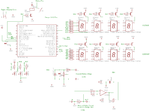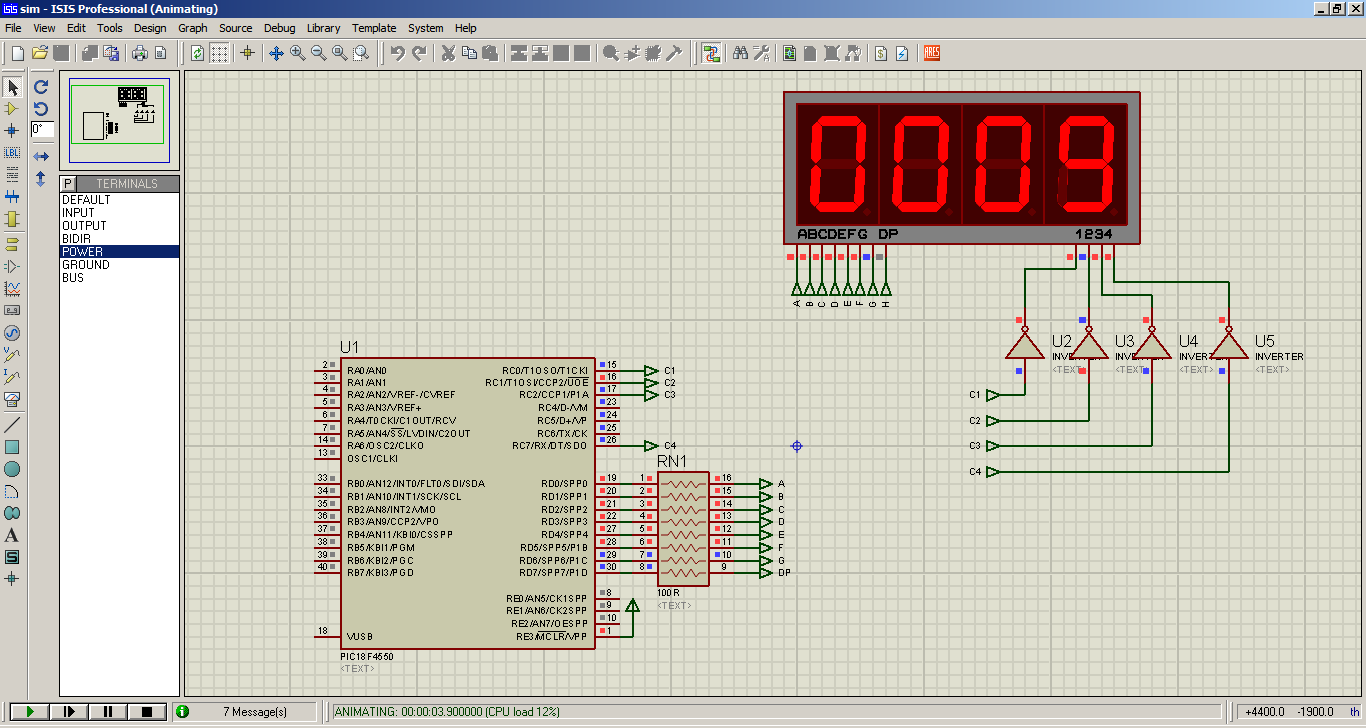nmbg011
Member level 3

- Joined
- Oct 22, 2011
- Messages
- 59
- Helped
- 2
- Reputation
- 4
- Reaction score
- 2
- Trophy points
- 1,288
- Activity points
- 1,687
Hello,
I need source code in MikroC for PIC18F4550 which control 12V battery charging process.
Charger is 13,8V Float Charger at limited 5A.
Controler should do following:
1. Check battery voltage and if battery voltage less then 13,75V Turn On charger, and if battery voltage is 13,80 do nothing - stay off.
2. Charger charging battery and when voltage is 13,80V Turn off charger, and charger stay off, until battery voltage go less 12,72V, then charger cycle again.
3. Four digit 7-seg LED display should show voltage in format example: 12.73
4. Second four digit 7-seg LED display current in 0-15A range. Current sensor is small value resistor 0,1mohm.
5. Charger is turned On/Off over Relay. Charger is independent circuit.
6. This control device will get power from charger circuit not from battery. When relay disconnect battery at full level, this device is powered over charger circuit, and continue to monitor battery voltage and current, until battery voltage goes under 12,72V.
Format of voltage on 4 7-seg led display (max 30V):
9.245
11.87
12.50
12.73
13.80
Format of current on 4 7-seg led siplay (max 15A)
0.100
0.555
1.145
5.500
9.732
10.00
15.00
If possibility exist to add one toggle taster which switch Ah/Current flow on second 4x 7-seg displays.
Example - in one state to show 40Ah _9Ah 14Ah 55Ah for 100Ah and more to show 100A
for second state to show current flow of amperage with previous descriptions. On end of cycle last value of Ah stand on 7-seg display like information for user.
One taster is needed for restarting of charging cycle.
I need source code in MikroC for PIC18F4550 which control 12V battery charging process.
Charger is 13,8V Float Charger at limited 5A.
Controler should do following:
1. Check battery voltage and if battery voltage less then 13,75V Turn On charger, and if battery voltage is 13,80 do nothing - stay off.
2. Charger charging battery and when voltage is 13,80V Turn off charger, and charger stay off, until battery voltage go less 12,72V, then charger cycle again.
3. Four digit 7-seg LED display should show voltage in format example: 12.73
4. Second four digit 7-seg LED display current in 0-15A range. Current sensor is small value resistor 0,1mohm.
5. Charger is turned On/Off over Relay. Charger is independent circuit.
6. This control device will get power from charger circuit not from battery. When relay disconnect battery at full level, this device is powered over charger circuit, and continue to monitor battery voltage and current, until battery voltage goes under 12,72V.
Format of voltage on 4 7-seg led display (max 30V):
9.245
11.87
12.50
12.73
13.80
Format of current on 4 7-seg led siplay (max 15A)
0.100
0.555
1.145
5.500
9.732
10.00
15.00
If possibility exist to add one toggle taster which switch Ah/Current flow on second 4x 7-seg displays.
Example - in one state to show 40Ah _9Ah 14Ah 55Ah for 100Ah and more to show 100A
for second state to show current flow of amperage with previous descriptions. On end of cycle last value of Ah stand on 7-seg display like information for user.
One taster is needed for restarting of charging cycle.
Last edited:




